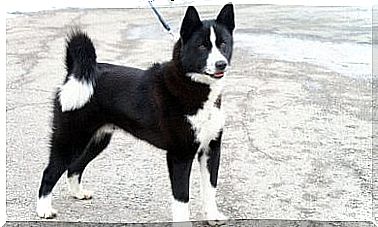All About Epilepsy In Dogs

Epilepsy is a brain disorder that causes a dog to have sudden, uncontrolled and recurrent physical attacks with or without loss of consciousness. Sometimes this can happen without the reasons being known. It is believed that, in some cases of epilepsy in dogs, the reasons are genetic.
Spontaneously arising (idiopathic) epilepsy is characterized by structural damage to the brain and most commonly affects males. If left untreated, attacks usually become more frequent and more severe.
What are the symptoms of epilepsy in dogs?

A dog with epilepsy has seizures. When this occurs, he may become stunned, hide or seek attention.
At the time of the seizure, your dog will fall to one side, become rigid, salivate deeply, pee, poop and make sounds. These seizures usually last between 30 and 90 seconds.
Seizures usually occur at night or in the early morning, while the animal is resting or sleeping. Puppies generally recover by the time they are taken to the vet for tests.
Soon after the seizures occur, your dog will feel confused and disoriented.
You can walk in circles and hit furniture. It is also possible to have a lot of drooling on your chin and perhaps some sort of mouth bleed if you have bitten yourself.
He may try to hide, have increased thirst and appetite. Recovery after a seizure may be immediate or take up to 24 hours.
In the case of a focal attack, abnormal electrical activity takes place in only one part of the brain.
Focal seizures can cause unusual movements in one extremity or one side of the body. Sometimes they only last a few seconds and can start in just one place and soon become generalized.
Puppies with epilepsy can have seizures at regular intervals of one to four weeks. This usually happens in large breed dogs.
The younger the dog, the more severe the seizures. However, the earlier the disease manifests, the greater the chances that the treatment will work. The drug is especially effective in puppies under two years of age.
In case your dog suffers an epilepsy attack, the first thing to do is to try to stay calm. If the dog is near something that could hurt him, such as furniture or stairs, gently remove him from that place.
Keep your pet’s mouth and head clear. Don’t put anything in your dog’s mouth. If the seizure lasts longer than two minutes, the dog is at risk for high temperature.
Turn on the fan and pour cold water on his paws, talk to him in a low voice, and gently touch him. Call your veterinarian when the seizure is over.
Epilepsy in dogs can also be caused by genetic problems. In many dog breeds this condition is quite common. There are several recessive genes in breeds such as the Labrador Retriever and the Berne Cattle.
Recessive genes have also been found in dogs of the Hungarian Braco Shorthaired, Irish Lébrel, English Springer Spaniel and Finnish Spitz breeds.
Features associated with genetic epilepsy usually manifest between ten months and three years of age. On the other hand, the breeds most prone to epilepsy with spontaneous causes include Beagle, Kesshond, Tervuren, Golden Retriever, Labrador Retriever, Hungarian Shorthair and Shetland Shepherd.
Treatment of epilepsy in dogs

The most important factors in diagnosing epilepsy with spontaneous causes are age at onset and pattern of seizures (type and frequency). In general, part of the treatment is outpatient.
It is recommended that the dog not try to swim. This prevents accidental drowning.
Most dogs that are medicated with anti-seizure medications end up overweight in the long run. Therefore, it is important to check your weight frequently and consult a veterinarian regarding a diet plan.
It is important to control the levels of drug chemicals in the blood.
Puppies treated with phenobarbital, for example, should be monitored after starting treatment during the second and fourth weeks. For them, it is recommended that a blood chemistry profile be done every six to 12 months.
There is no way to prevent epilepsy. However, if your dog suffers from this disease, it is necessary that the seizures are controlled.
Try to avoid salty foods, especially those that adult pets are treated with, with potassium bromate as an ingredient. The substance can lead to seizures and kidney failure.









